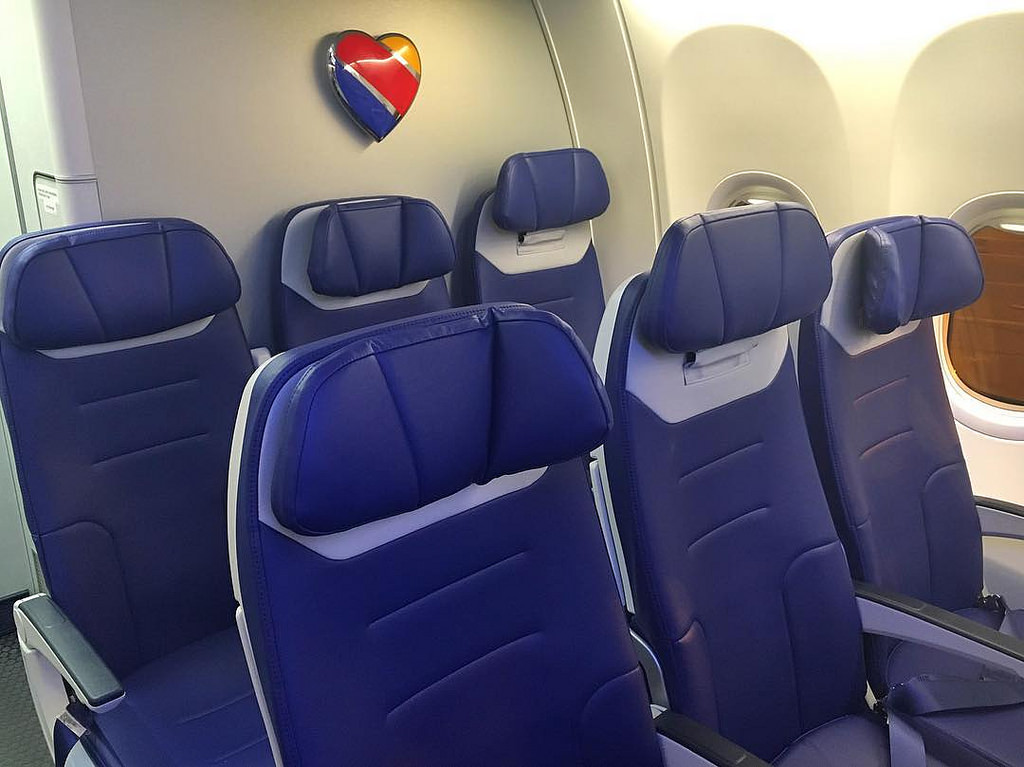
Today Senior Contributor R.D. Sussman returns with another gem. He has previously written fantastic pieces about the modern rise of Delta, the new American Airlines, the History of Low Cost Carriers, United Airlines, the History of Air Shuttles, The Middle East 3, Alaska’s purchase of Virgin America and United’s Polaris. He has been involved with the airline industry for over 20 years and is an active travel consultant and airline analyst. R.D. is also a huge #Avgeek and theme park enthusiast.
The Modern History of Airline Seats
Many of our readers aren’t lucky enough to score an upgrade to First or Business all the time – though it is a lovely luxury, it is often not possible even in the best of circumstances. For those lucky enough to sit beyond the gilded curtain, it’s a gift of what flying was like… less than 30 years ago. That aside, airlines are turning to new methods to put more seats into less space, and to increase the yield per flight as much as possible. How is this being done? Well, as we know pitch is tight… and seats are getting diets.
But before I dive into the current state of the seat, let’s take a brief history tour of the economy class seat, from the start of deregulation. Prior to 1978, seating was pretty much identical across the industry – other than fabrics & materials, the same pitch was nearly identical in economy: 34 to 36 inches. Many carriers, notably Braniff, TWA & United used Heath-Techna seating, which allowed the center seat in a three-seat pair to be folded down and become a table. Though seat width didn’t really evolve for many years, the innovations of seating in the 1970s were leaps forward into how far an airline chose to invest in the passenger comfort experience. The exception was the charter airlines – such as World & TransAmerica, who used high-density seating with reduced legroom to reduce costs by adding seats. While they were similar seats, it wasn’t uncommon to have 29 inch pitch on their larger planes.
Deregulation Means More Passengers
By the turn of 1979, airlines had a new issue to deal with – primarily in the booming number of passengers flying on the newly-discounted fares immediately following the start of deregulation. Where planes had previously flown no more than an average of 60% full, by the summer of 1979, airlines were reporting record loads, which in turn pointed to the first real change in seating: More of them. Airlines clamored to squeeze in seating at a blinding pace; United is credited with taking the first steps forward by removing closets and reducing the number of First class seats, and adding in additional rows in economy. The goal was to keep pitch comfortable and reuse seating as much as possible. By doing this, United was able to maintain a 34 inch economy pitch, and add upwards of 18% more seats.
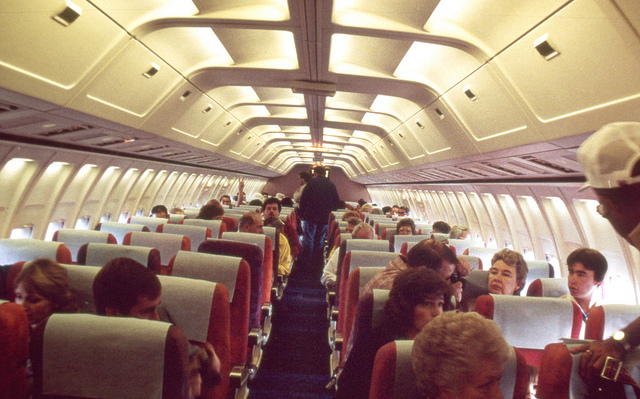
By 1980, though the industry was at the start of one of the regular recessions, the volumes of passengers were still busting the doors off the hinges. Eastern took the next step backwards by reducing economy pitch to 33 inches, and by adapting new seats to their fleet with the introduction of the 757. These new ‘slimmer’ seats from Heath allowed up to five more rows of seats on their aircraft without a noticable reduction in comfort. A trend was set, and airlines again began adding even more seats into their planes.
At the same time, the rise of the Low Cost Carriers such as PEOPLExpress, Midway & Southwest meant that further inroads into this area. Weber Aeroseating (Now Weber Aerospace Solutions) introduced a thinner seat which allowed for even further reductions in pitch to put as many seats as possible onto a plane. PEOPLExpress was one of the first adapters of this, shoehorning 189 seats onto the 727-200 – the maximum it was certified to fly with.
By the end of the 80s, most of the major airlines were adapting economy to fit what people were willing to pay for them. Weber seating had taken hold in the industry, and had been adapted by many of the carriers interested in thinner seats – and more of them for the economy cabin. Seating pitch was on average 32-33 inches, and for the most part this is where it stayed for a good portion of the 90s.
Coming Into Modern Day
The arrival of the 2000s brought some tremendous changes in the industry. Economy was just that – a seat & a seatbelt, and airlines began the quest for the holy grail: More seats, less money. It began a series of changes to the industry, and to the economy class cabin that have been rolling forward since. As the ULCC boom began in the mid-2000s, airline seating began to shrink – to go on a crash diet if you will – to add as many seats as possible to already crowded planes. Let’s take a look now at what the two largest ULCCs – Frontier & Spirit – use as seating on their aircraft: Acro Aero Seating.
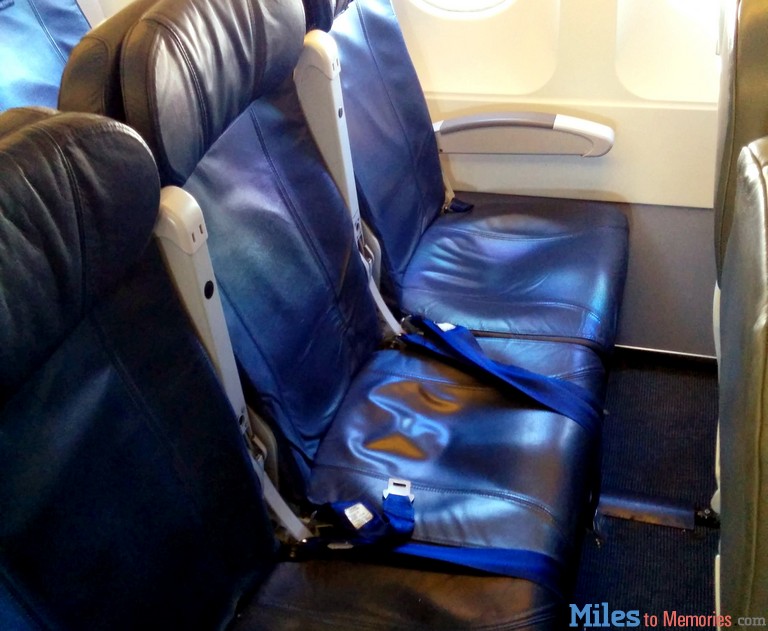
These are the most bare-bones seats on the market today – and are the first real ultra slim line seats in use. A hard plastic shell wrapped in a thin layer of foam rubber & covered in each carrier’s preferred material makes for the ultimate in compact seating. Seat back pockets are reduced to a minimum, and the tray table is only large enough to hold a single drink cup or your tablet – and very little else. They do exactly what the ULCCs want: A seat & a seatbelt, with no frills beyond this. And the result is just that: You’re going to be in pain when flying in them for more than a 90 minute flight. (It should be noted that these seats are also the ones in use by Hawaiian Airlines on their short-haul 717 & Ohana ATR-72 fleets.)
The USA’s largest domestic carrier, Southwest, also began putting their seats on a diet, which resulted in the EVOLVE seat. Slimmer, and with reduced seat back pocket size, these were rolled out in 2010 with much fanfare as they were made ecologically friendly. Recycled materials formed the seat coverings, and other features made them lighter & more durable… and allowed Southwest to add an additional six seats to their 737-300 & 737-700 fleets. Within months, the seat covers began to wear out, and the passengers began to speak: They were some of the most uncomfortable aircraft seats on the market. With nearly 3/4ths of their fleet changed to the EVOLVE seating, Southwest was in a bind. A few minor changes in how they were padded helped alleviate the pain… but in the end even Southwest has relented. Starting this year (2016) a new interior will begin to appear on new build 737-800s and beyond – the Heart interior. Seating for this configuration is being made by BE Aerospace and features some notable additions to the seat: Power ports & drink holders plus relocated seat back pockets & a tray table that is able to handle a tablet. A far cry from when Southwest offered lounge seating, and some of the best seats in the sky.
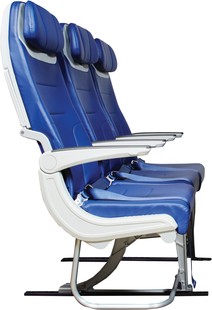
The Big U.S. 3
Delta, United & American have been busy over the past few years with their own seating changes. American, fresh off the completed merger and integration process has begun the standardization of their economy cabins. While this process is ongoing, some of the features of USAirways & American have found their way into the new seating offerings. With the introduction of a new fleet of Airbus 319 aircraft at American, slimline seats by Zodiac, the majority of the narrow body fleet will be standardized around this model of seating. However, the seat pitch is tight – 30-31 inches – and though the new seating is padded well, the #1 complaint is that it is almost cramped in how it is squeezed into the airplane.
United has also chosen to go this route with the Zodiac seat as the basis for economy cabins fleet wide. Many of the existing narrowbody fleet has already been converted into the 5751 seat, which by experience isn’t the worst experience one can have. As United switches to in-flight entertainment by streaming, features such as the IFE screens will be removed – as will the former DirectTV screens that Continental was installing at the time of the merger. Power ports are also common among the 5751 seating, a plus for most of the travelling public.
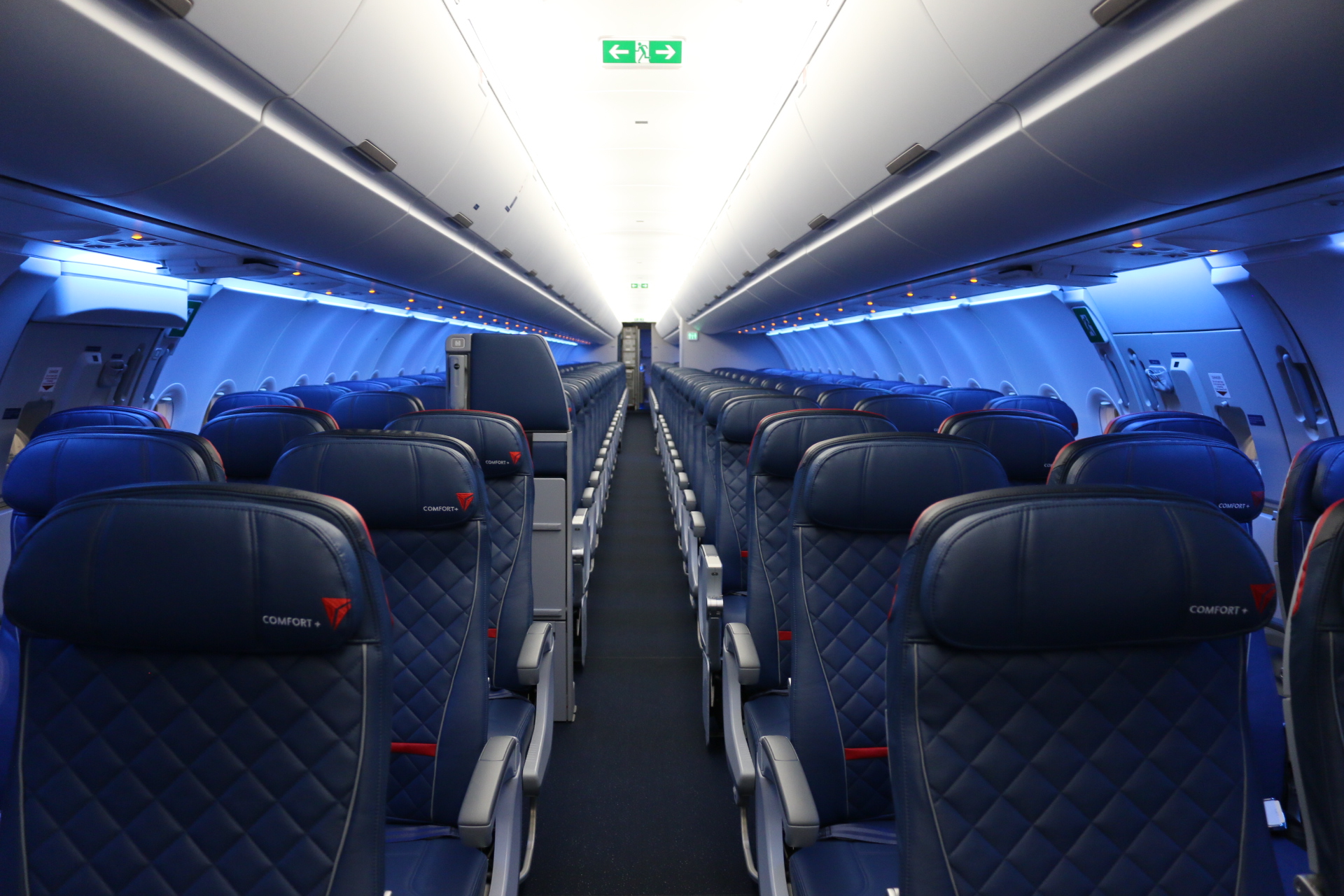
Delta has chosen a different route, instead preferring to use the BE Aerospace Pinnacle seat and their own custom features. Delta continues to overhaul their fleet with the new seating, with the majority of their aircraft now flying these. IFE has become standard on almost all of their aircraft, and will continue to do so as new 737-900ER and Airbus 321s join the fleet. One of the most commonly heard complaints about this seat is that the seat bottom is lacking a firmer padding, leading to some very sore complaints in the end.
Conclusion
As airlines continue to look for new variants of the seat, there will be two things that remain constant: Airlines will always be looking to the best solution to fit their costs & budgets, and that there is a finite level of durability required for airline seats to be certified safe by the FAA. In this, we are lucky: We’re not going to see web seating like on military transports (though I think a few airlines may have thought of this as a cost-saving measure!) and the various seat builders will always be trying to push the envelope to increase capacity on airplanes. It remains to be seen how far they will go.
R.D.
7/27/16



[…] Middle East 3, Alaska’s purchase of Virgin America, United’s Polaris and Slim Line Seats and the spread of Basic Economy fares. R.D. has been involved with the airline industry […]
[…] Middle East 3, Alaska’s purchase of Virgin America, United’s Polaris and Slim Line Seats. R.D. has been involved with the airline industry for over 20 years and is an active travel […]
[…] Middle East 3, Alaska’s purchase of Virgin America, United’s Polaris and Slim Line Seats. He has been involved with the airline industry for over 20 years and is an active travel […]
[…] Middle East 3, Alaska’s purchase of Virgin America, United’s Polaris and Slim Line Seats. He has been involved with the airline industry for over 20 years and is an active travel […]
You should mention how AA tried More Room Throughout Coach from 1998 to 2003 and it failed, they eventually added those seats back in. People weren’t willing to pay a fare premium for the extra legroom.
Thanks for the great article!
There is not going to be power ports on Southwest’s new interior. I fly the new ones a few times and nothing.
The new Heart interior is only on two planes at this point – out of nearly 700 in the fleet. Chances are you’ve not flown on a Heart interior – yet – as they are just now entering service (One has been in service for five weeks, the other for less than four days.)
R.D.
Yes I have. 3 times already 🙂 All blue interior is hard to miss. But Southwest has already said no power coming. Lots of other blogs have already covered that.
But hey, I am happy to be proven wrong.
Here is a photo of what the new interior looks like in person: http://imgur.com/a/rYzHN
And if they are doing power it was nowhere to be found on this bad boy.
I really hope they change their minds and add it to newer planes.
Yeah I thought they got rid of everything to reduce weight.
Great post. I think it would be more interesting to add in some of the foreign carriers like BA that have gone down the slim seat and small pitch road over the years.
Thanks! I’ve been looking at the international arena as of late, including the changes at all the major European carriers (Swiss, BA, AF&KLM, and Lufthansa) and think that will be in the future – as there’s some more in-depth history of the seat there. I can say the one that has really jumped on the ultraslimline bandwagon is Swiss – with the introduction of some of the narrowest seat pitch in the industry on their Airbus fleet.
Stay tuned & buckle your seatbelt 🙂
R.D.